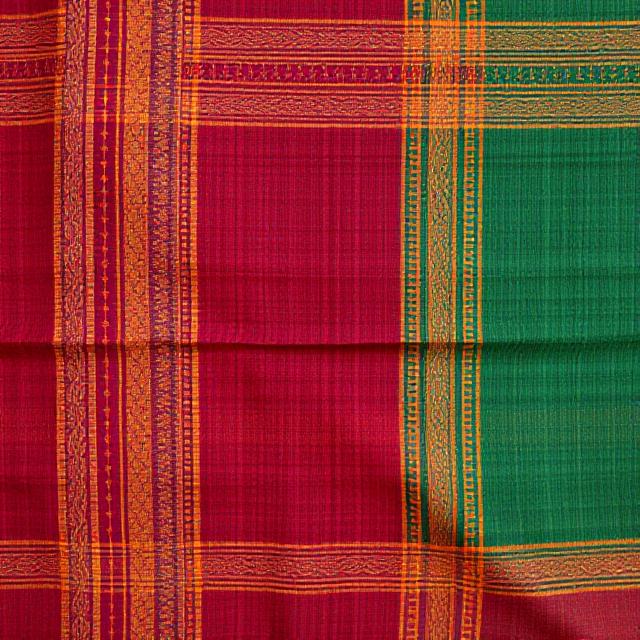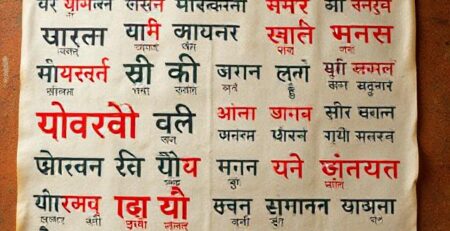India’s Textile Comeback: The $100 Billion Roadmap to Reclaim Global Leadership by 2030
India’s textile industry — once the pride of global trade and craftsmanship — is preparing for a historic comeback. The government is now finalizing a cost and competitiveness roadmap to transform the nation’s textile and apparel exports from $40 billion today to $100 billion by 2030.
This ambitious blueprint, spanning three phases — short-term (2 years), medium-term (5 years), and long-term (by 2030) — aims to fix deep-rooted inefficiencies in cost, infrastructure, and productivity that have long hampered India’s global textile dominance.
Let’s explore the vision, strategy, challenges, and opportunities shaping India’s $100 billion textile transformation.
🧭 The Big Picture: Why India’s Textile Comeback Matters
India’s textile story is as old as civilization itself — from handwoven fabrics of the Indus Valley to today’s multi-billion-dollar industry employing 45 million people directly and indirectly.
Yet, in recent decades, countries like Bangladesh, Vietnam, and China have raced ahead in textile exports by leveraging cost efficiencies, trade agreements, and industrial-scale productivity.
Currently:
- India’s textile and apparel exports stand at $40 billion annually.
- Bangladesh exports over $45 billion, despite a smaller economy.
- Vietnam exports nearly $50 billion, benefiting from multiple FTA advantages.
The Indian government’s goal to reach $100 billion exports by 2030 is therefore not just economic — it’s symbolic of reclaiming global leadership in a sector deeply tied to India’s heritage and industrial strength.
⚙️ Key Cost Challenges: Why India Lost Its Edge
The Ministry of Textiles has conducted extensive benchmarking and identified four major cost disadvantages that have made Indian textile exports less competitive globally.
1. High Raw Material Costs (10–15% higher than competitors)
- Cotton and polyester — India’s two main raw materials — are priced higher than in Bangladesh, Vietnam, and China due to domestic taxes and logistics inefficiencies.
- Dependence on imported synthetic fibres adds further cost volatility.
2. High Logistics & Energy Costs
- India’s power tariffs for textile clusters like Tiruppur, Surat, and Ludhiana are 20–25% higher than in Vietnam and China.
- Port logistics and last-mile connectivity raise freight costs by another 5–7%.
3. Lower Labour Productivity
- Studies show India’s labour productivity in garmenting is 20–40% lower than in Bangladesh and Vietnam.
- Outdated machinery, skill gaps, and rigid labour laws contribute to inefficiencies.
4. Lack of Duty-Free Market Access
- Competing nations enjoy zero-duty access to key markets like Europe and the UK through FTAs, while Indian exports face 9–12% tariffs.
🚀 The Roadmap: A Three-Phase Strategy for Transformation
The government’s textile roadmap is designed as a three-phase plan targeting cost competitiveness, innovation, and trade advantages.
Phase 1 (2025–2027): Short-Term Focus – Cost Efficiency & Policy Reform
Objective: Identify and reduce cost inefficiencies across the manufacturing chain.
Key Initiatives:
- Cost Benchmarking: Introduce a national cost index comparing yarn, fabric, and apparel production costs with global averages.
- Power Subsidies & Cluster Upgrades: Offer energy cost offsets for major textile clusters like Coimbatore, Surat, and Panipat.
- GST & Input Rationalization: Simplify GST refund for textile exporters to ease working capital stress.
- Labour Law Simplification: Pilot flexible labour codes for seasonal employment in export clusters.
Phase 2 (2027–2030): Medium-Term Focus – Innovation, R&D, and Sustainability
Objective: Move up the value chain through innovation and sustainable manufacturing.
Key Initiatives:
- R&D Promotion: Fund textile research institutions and partner with IITs for technical textiles and smart fabrics.
- Sustainability Drive: Incentivize adoption of organic cotton, bio-based synthetics, and waterless dyeing technologies.
- Digital Traceability: Introduce blockchain-based systems for fibre-to-fabric traceability, ensuring export transparency.
- Skill Development: Establish specialized textile skill academies focusing on automation, design, and robotics integration.
Phase 3 (2030+): Long-Term Focus – Global Leadership & Branding
Objective: Build India as a trusted, branded textile source globally.
Key Initiatives:
- Trade Advantage: Fast-track Free Trade Agreements (FTAs) with EU, UK, and Canada, ensuring duty-free access.
- Design and Branding Push: Support Indian design houses and textile start-ups for global recognition.
- Technical Textile Hubs: Develop dedicated clusters for defence, medical, and automotive textiles.
- Export Incentives: Launch PLI 2.0 scheme focused on high-value segments like athleisure, sustainable fabrics, and smart wearables.
💡 Focus Areas of the Roadmap
| Focus Area | Objective | Impact |
|---|---|---|
| Cost Benchmarking | Identify inefficiencies | Competitive pricing |
| R&D Innovation | Promote technical and smart textiles | Higher global value |
| Ease of Doing Business | Simplify labour and quality laws | Investment attraction |
| Trade Advantage | Accelerate FTAs with EU & UK | Duty-free exports |
| Design & Branding | Support start-ups & incubation | Global recognition |
🏭 Opportunities for Investors & Manufacturers
India’s textile revival opens multi-billion-dollar investment opportunities across segments.
1. Traditional Giants Poised for Growth
Companies like Arvind, Trident, Welspun, and Vardhman are expected to benefit the most from:
- PLI-linked export incentives
- Energy cost rationalization
- Higher global demand for sustainable sourcing
These firms are already expanding into sustainable cotton, recycled polyester, and technical fabrics — the next growth frontier.
2. High-Growth Segments: Technical & Sustainable Textiles
The global technical textiles market is valued at $220 billion, growing 6–8% annually. India’s share is still under 5%, but the government targets $40 billion by 2030.
Sustainable textile innovations — biodegradable fibres, water-efficient dyeing, and recycled yarn — are drawing major venture investments and joint ventures with European partners.
3. Rising Demand for Ethical and Traceable Fashion
Global brands like H&M, Zara, and Nike are now prioritizing traceable, low-carbon suppliers. India’s push for ESG compliance and digital traceability could give it a decisive edge.
Clusters that adopt blockchain traceability and eco-certifications are likely to attract high-margin export contracts.
📈 The Numbers Behind the Comeback
| Parameter | 2024 Estimate | 2030 Target |
|---|---|---|
| Textile & Apparel Exports | $40 billion | $100 billion |
| Employment | 45 million | 55 million |
| Technical Textiles | $8 billion | $40 billion |
| Share of Global Trade | 5% | 10% |
| Sustainability-certified Units | 15% | 60% |
⚠️ Risks to Watch
Despite the optimism, several challenges could delay or dilute India’s textile transformation.
1. Persistently High Energy & Raw Material Costs
Global oil price volatility and domestic energy tariffs could sustain cost pressures despite subsidies.
2. Slow Productivity Improvements
Modernizing machinery and retraining workers require sustained capital investments, which SMEs may struggle to afford.
3. Compliance Costs
Global ESG and sustainability norms require expensive audits and certifications, which may burden small exporters.
🌍 Global Context: Competing with Bangladesh, Vietnam & China
| Country | Export Value (USD bn) | Key Advantage |
|---|---|---|
| China | 280 | Scale & integrated supply chain |
| Vietnam | 50 | FTAs & high labour productivity |
| Bangladesh | 45 | Low labour cost & duty-free access |
| India | 40 | Large base & raw material strength |
India’s roadmap aims to neutralize cost disadvantages through infrastructure, automation, and trade diplomacy — while leveraging its raw material advantage (cotton, jute, silk).
🧠 R&D and Innovation: The Real Game-Changer
Innovation is central to the $100 billion plan.
The National Technical Textiles Mission (NTTM) already supports projects in:
- Smart wearables
- Defence textiles (Kevlar, ballistic fibres)
- Medical fabrics (antimicrobial coatings)
- Agro textiles (climate-resilient nets)
Additionally, the government plans joint R&D hubs with EU and Japan to promote cross-border collaboration in sustainable manufacturing.
💬 Questionnaire Subheadings
1. What is India’s textile roadmap about?
It’s a government-led initiative to transform India’s textile and apparel exports from $40 billion to $100 billion by 2030 through cost reform, innovation, and trade expansion.
2. Why did India lose its textile edge?
High input costs, low labour productivity, and lack of free trade access have eroded India’s competitiveness versus Bangladesh and Vietnam.
3. What are the key focus areas of the roadmap?
Cost benchmarking, R&D innovation, trade agreements, sustainable manufacturing, and design-led branding.
4. Which companies benefit from these reforms?
Arvind, Welspun, Trident, and Vardhman, along with emerging technical textile players, stand to gain from incentives and demand growth.
5. What are the main risks?
Persistent high energy costs, slow productivity gains, and ESG compliance expenses could impact profitability.
6. How will sustainability shape the industry?
Sustainability is now a commercial advantage — buyers prefer suppliers with green certifications, traceable supply chains, and circular production.
7. What is the government’s target by 2030?
To reach $100 billion exports, generate 10 million new jobs, and position India among the top 3 global textile exporters.
🧩 The Bigger Picture: Why This Roadmap Matters for India’s Economy
The textile industry is not just about fabric — it’s about jobs, gender empowerment, and regional balance. Over 70% of textile workers are women, and textile clusters support millions of MSMEs.
A successful execution of this roadmap can:
- Generate 10 million new jobs
- Contribute 5% of GDP
- Boost foreign exchange earnings
- Drive rural industrialization through cluster-based models
In essence, textiles could become the linchpin of India’s $5 trillion economy vision.
⚠️ Disclaimer
This article is intended for informational and educational purposes only. The projections and figures are based on publicly available data, government policy discussions, and market reports as of 2025. Economic and trade conditions may change due to global or domestic factors. Readers and investors should refer to official sources such as the Ministry of Textiles, Government of India, before making business or investment decisions.
Bottom Line
India’s textile sector stands at a historic inflection point. After decades of losing ground to smaller nations, a clear and ambitious $100 billion roadmap is now being crafted — anchored on cost competitiveness, innovation, sustainability, and global branding.
If implemented effectively, India could reclaim its position as a global textile powerhouse by 2030, transforming from a low-margin supplier to a leader in high-value, sustainable textiles — and stitching together a new chapter in the country’s economic legacy.












